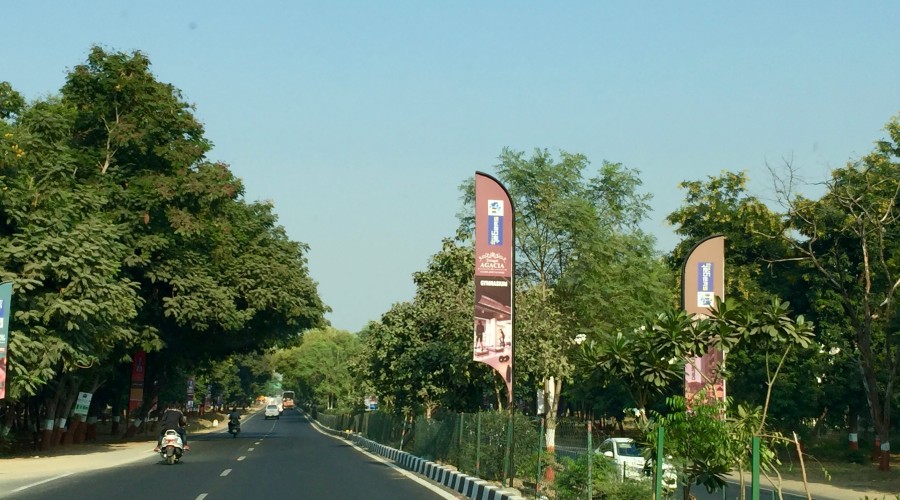10 Greenest Cities in India every Architect must know about

Unchecked urbanization has resulted in our cities becoming a concrete jungle, resulting in widespread pollution. Everywhere we look, we see traffic and massive structures. For the residents of the town, the congested environment is nothing new. However, some areas have attempted to strike a balance between development and the preservation of green spaces. The term “greenest cities” may also be translated as “most sustainable cities,” since they use renewable energy resources to reduce pollution as much as possible. Here is a list of India’s greenest cities, which have coexisted with the country’s metropolitan environments to conserve wildlife.
1. Mysore | India’s Greenest City
Despite being the third most populous city in Karnataka, Mysore is India’s first and most “green and clean” city. Mysore has been named the greenest city in India by Swachh Bharat Urban. Mysore is Karnataka’s second biggest city (by area), and it is one of the best-planned cities due to its cultural history and strategic position.
2. Chandigarh | India’s Greenest City
Chandigarh was one of India’s earliest planned cities. It is one among India’s most environmentally friendly cities, thanks to its urban infrastructure and preserved vegetation. According to the Forest Department of India, Chandigarh is located in the foothills of the Shavlik range of the Himalayas and is the joint capital of Punjab and Haryana. It has a forest and tree cover of 35.5 percent in its 114-square-kilometer territory.
3. Bangalore | India’s Greenest City
Bangalore, also known as Bengaluru, is the capital of Karnataka, an Indian state. It is also known as “The Garden City.” This rapidly expanding city boasts a comfortable temperature, beautiful gardens, parks, and natural lakes. The IGBC – a division of the Confederation of Indian Industries – has certified roughly 333 green buildings and a total of 227.92 million sqm of green space in the city as of today (CII). It is known as India’s Silicon Valley due to its status as the country’s most important IT centre.
4. New Delhi | India’s Greenest City
Despite being one of the world’s most polluted cities (due to poor air quality), it is also one of India’s greenest, with trees covering 7% of its land area. Amaltas, Gulmohar, Jacaranda, Milletia, Jamun, Amla, Aam, Bahera, and other plants abound in Lutyens’ Delhi’s luxuriant greenery. Planting trees, improving infrastructure, and enforcing rigorous rules have all contributed to the capital city being clean and green. Delhi has tackled environmental difficulties to obtain its ‘Green’ status, as seen by the clean energy revolution through CNG, an active planting effort that boasts a green cover spread of over 20% of the city, full public transportation operating on CNG, and more than 20,000 parks.
5. Dehradun
Dehradun is also one of India’s cleanest cities, scoring well on the “greenery scale.” This city is known for its verdure mountains and waterfalls, as well as its location in the Himalayas. It is one of northern India’s highest rain-receiving towns and home to notable institutions such as the Indian Military Academy. The lovely valley is also a well-known educational centre.
6. Bhopal | India’s Greenest Cities
Bhopal’s land and water were poisoned by a major chemical leak from a pesticide factory in 1984, killing over 4,000 people. The catastrophe left an indelible mark on the city’s memories. Bhopal is currently one of India’s greenest cities, and its efforts to rehabilitate its image have been generally successful. Bhopal is more than simply a bustling city; it has kept its forest history while while growing as a commercial hub. The outcomes are the result of a combination of environmental knowledge, legislative execution, and the inhabitants of Bhopal’s commitment to improve the city.
7. Diu | India’s Greenest City
The Diu Smart City has made history by becoming India’s first city to run entirely on renewable energy during the day, establishing a precedent for future towns to follow. According to the Ministry of Housing and Urban Affairs, the city has constructed a 9-MW solar park encompassing over 50 hectares of rocky barren ground, as well as placing solar panels on the rooftops of 79 government buildings, which generate 1.3 MW yearly.
8. Gandhinagar
Gandhinagar, Gujarat’s capital, is regarded as one of India’s best-planned cities. On the banks of the Sabarmati River, this state capital is located. Gandhinagar has maintained the environment while growing urban growth. Gujarat’s capital city, with 32 lakh trees and a population of 1.5 lakh, has around 22 trees per person.
9. Jamshedpur | India’s Greenest City
Despite being heavily industrialized, Jamshedpur ranks as India’s 15th cleanest city. The city is surrounded by deciduous woodland, accounting for 33 percent of the entire land area. Tata Steel’s dedication to a “cleaner and greener Jamshedpur” is seen in the company’s ongoing tree-planting campaigns, which help to maintain the city’s green carpet. There are several parks, playgrounds, and tree-lined streets throughout the city. The Jubilee Park, which covers 37.75 acres and is filled with flowerbeds and lit fountains, is the most well-known tribute to Jamshedji’s vision of a green city.
10. Shimla
Shimla is the capital of Himachal Pradesh and the state’s most popular hill station. Shimla is one of India’s most artistically constructed cities, nestled among gorgeous hills and magical woodlands. The city’s colonial architecture, cathedrals, temples, and natural beauty will enchant you. Pine, deodar, oak, and rhododendron trees may be found in Shimla. Ridge is a popular tourist destination because of its open, broad roadway with an exceptional panoramic view of the mountains. Shimla is regarded as the “Queen of Hills” because of its diverse flora and wildlife. Shimla has joined the ranks of “Green Growth Cities,” with the municipal corporation launching an ambitious effort to find and create applications and solutions to promote the notion of green growth via the use of ICT (ICT).









